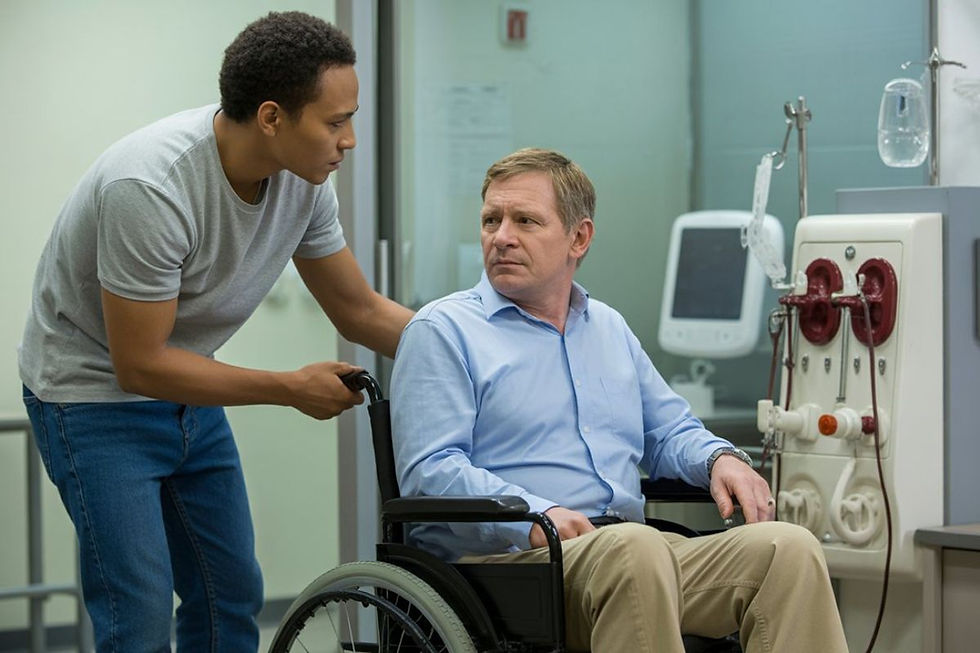Top 5 Techniques for Safe and Effective Functional Transfers
- securecomfortcareu
- Jan 11
- 3 min read
Functional transfers play a crucial role in improving the quality of life for individuals with limited mobility. Whether it's helping someone move from a bed to a wheelchair or assisting them in standing up from a seated position, these transfers are key to daily living. Not only do they ensure safety, but they also promote independence and confidence for both the individual and the caregiver.
Understanding Functional Transfers

What Are Functional Transfers?
Functional transfers refer to the act of moving an individual from one position or location to another safely and effectively. They are essential in caregiving and rehabilitation settings.
Common Types of Transfers
* Bed to Wheelchair Transfers: Helping a person move from a lying position to sitting in a wheelchair.
* Wheelchair to Toilet Transfers: Ensuring safe mobility for personal hygiene tasks.
* Chair to Standing Position: Assisting individuals in rising from a seated position, often a precursor to walking or standing exercises.
Top 5 Techniques for Safe and Effective Functional Transfers

1. Proper Body Mechanics
Using the right body mechanics is essential to prevent injuries for both the caregiver and the individual.
* Tips for Caregivers:
* Bend your knees, not your back.
* Keep the individual close to your body.
* Avoid twisting your torso during transfers.
* Benefits: Proper posture reduces strain and ensures stability during the transfer.
2. Utilizing Assistive Devices
Assistive devices make transfers smoother and safer.
* Types of Devices:
* Transfer Boards: Ideal for sliding transfers between surfaces.
* Gait Belts: Provide a secure grip to guide the individual.
* Lift Systems: Mechanical lifts for heavier individuals or complex transfers.
* Usage Tips: Always ensure the device is in good condition and used as per instructions.
3. Communication and Planning
Clear communication ensures everyone involved knows what to expect.
* Key Steps:
* Explain the process to the individual before starting.
* Use simple, direct instructions.
* Confirm understanding and readiness before proceeding.
* Engaging the Individual: Involving them promotes cooperation and reduces anxiety.
4. Strengthening and Mobility Exercises
Physical therapy can enhance an individual's ability to participate in transfers.
* Exercises:
* Leg lifts and seated marches to improve strength.
* Core stability exercises for better balance.
* Mobility Training: Gradual practice of transferring with supervision builds confidence and skills.
5. Ensuring Safety and Environment Preparation

A clutter-free, well-prepared environment minimizes risks.
* Preparation Tips:
* Remove obstacles like rugs or furniture.
* Ensure equipment is adjusted for height and stability.
* Conduct a quick safety check before beginning the transfer.
Benefits of Learning Functional Transfer Techniques
Mastering these techniques ensures:
* Safety: Reduces the risk of falls and injuries.
* Independence: Encourages self-reliance for the individual.
* Confidence: Boosts morale for both caregivers and individuals.
Common Challenges in Functional Transfers and How to Overcome Them Resistance from the Individual

* Solution: Use positive reinforcement and patience to encourage cooperation.
Physical Limitations of the Caregiver
* Solution: Seek training on proper techniques and use assistive devices to reduce strain.
Lack of Appropriate Equipment
* Solution: Invest in quality devices and consult professionals for recommendations.
Conclusion
Functional transfers are more than just physical movements—they're a bridge to independence and safety. By applying proper techniques, using assistive devices, and creating a safe environment, caregivers can make these transfers smooth and stress-free. Whether you’re searching for wheelchair transport near me or learning new methods for assistance, practice and patience can make functional transfers significantly improve the quality of life for everyone involved.








Comments